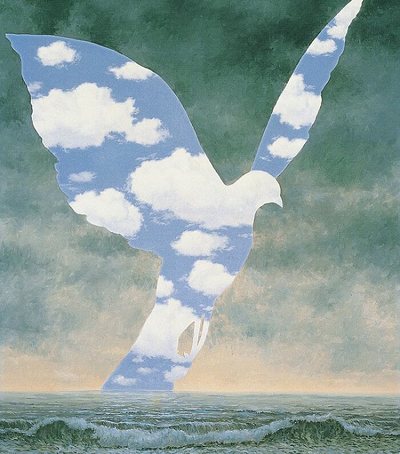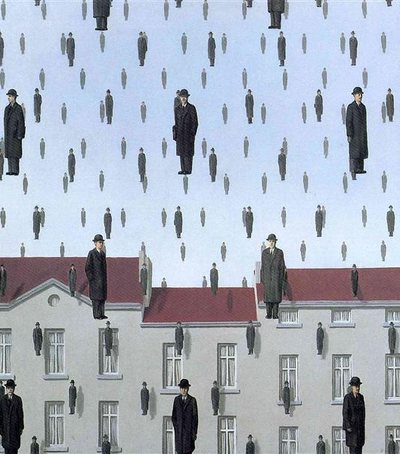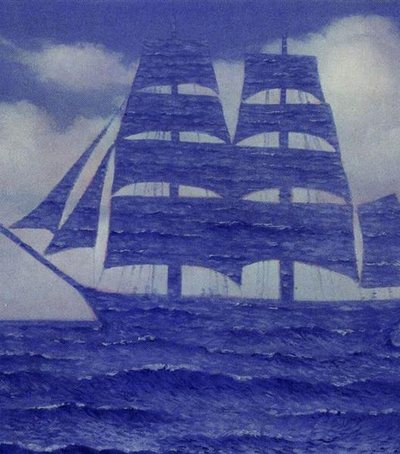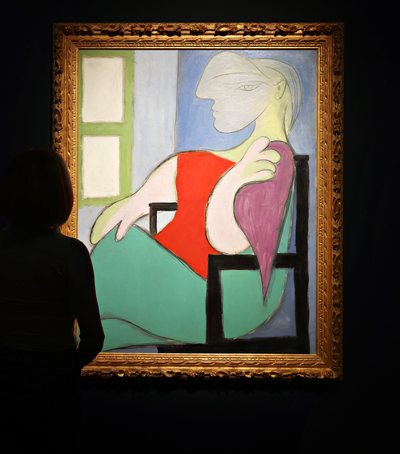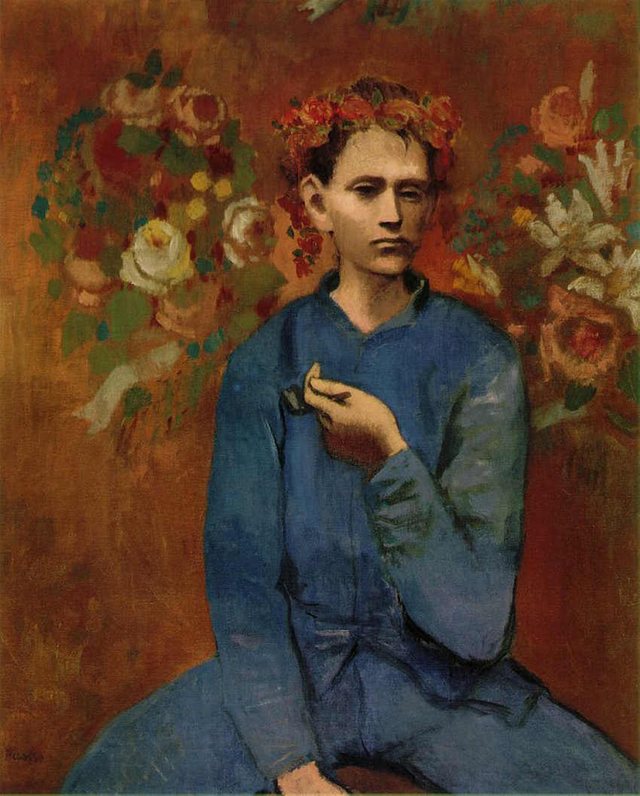
In this 1905 painting, Pablo Picasso depicts a boy sitting facing us, dressed in blue overalls and holding a pipe in the wrong hand. He is crowned with a crown of roses, an unusual element for such a young and simple figure.
André Salmon, a close friend of Picasso, wrote about this painting in 1912. He described how “Picasso had painted, without using a model, the pure and simple image of a young Parisian worker, beardless and dressed in blue jeans – just like the artist himself during his working hours.” The boy is not only wearing Picasso’s studio uniform, but he is crowned in the same way as poets in antiquity – a detail that gives the figure a symbolic and poetic character.
The biggest conundrum facing interpreters, however, is the pipe. It defies visual logic: people simply don’t hold a pipe that way. This suggests that Picasso included it as a symbol, an idea intended for the viewer to observe beyond the external form. The pipe, often a symbol of intellectual reflection in 19th and 20th century painting, seems to be held by the artist himself – outside the painting – as he gazes at his creation and thinks of it as a reflection of himself.
In this way, the pipe becomes a connecting element between the reality of the studio and the inner world of the image. Sue Roe describes it as an “opium pipe,” a drug that Picasso was using at the time—thus deepening the sense of meditation, dreaming, and the fusion of identity. The painting becomes a fusion of two realities: the figure of the boy as a reflection of Picasso himself, a calm and thoughtful alter ego of the artist.
Photo Credits (Public Domain of US): https://en.wikipedia.org/wiki/File:Gar%C3%A7on_%C3%A0_la_pipe.jpg

